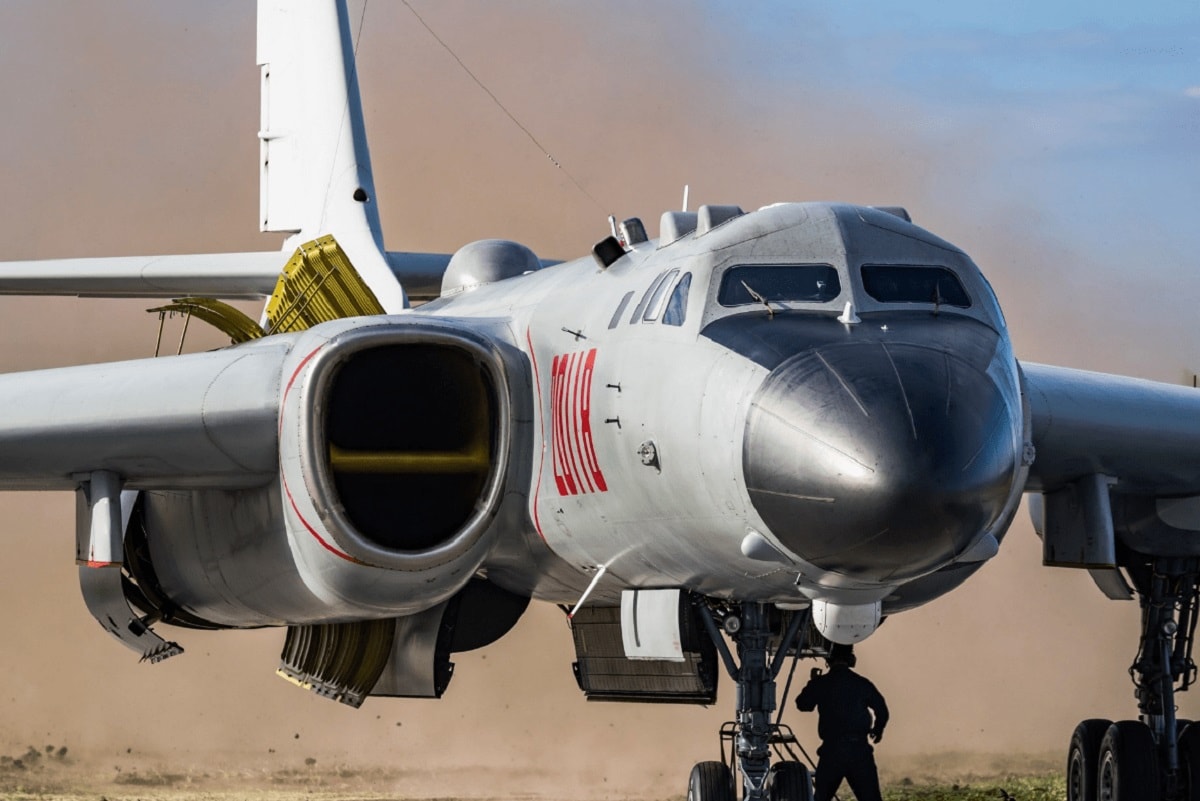The People’s Republic of China conducted its first nuclear weapons test on October 16, 1964, and nearly 60 years later it remains one of just eight nations in the most exclusive – and arguably potentially destructive – club in the world. Combined, the member nations of the so-called “Nuclear Club” control at least 15,600 warheads, enough to destroy the world many times over.
According to recent estimates, China ranks fourth with 350 nuclear weapons in its inventory – compared to the 3,708 currently held by the United States.
However, China has been expanding its nuclear arsenal in recent years and last November Pentagon officials warned that Beijing was looking to have up to 700 deliverable nuclear warheads by 2027 and at least 1,000 by 2030.
“Over the next decade, the PRC aims to modernize, diversify and expand its nuclear forces,” the United States Department of Defense (DoD) warned in a congressionally mandated report.
“The PRC is investing in, and expanding, the number of its land, sea, and air-based nuclear delivery platforms and constructing the infrastructure necessary to support this major expansion of its nuclear forces,” the report added.
Buildup Continues
The buildup had begun even as Washington had previously called on Beijing to join the U.S. and Russia in a new arms control treaty. Given the state of affairs with Russia, following its unprovoked invasion of Ukraine and the response by NATO, which has included supplying arms to the government in Kyiv, such an arms control treaty is now likely a complete nonstarter.
The buildup of nuclear weapons follows efforts to increase the size and far-reaching capabilities of the People’s Liberation Army Navy (PLAN), which has been on a building spree.
“The breath-taking expansion of land, sea, and air-based nuclear delivery platforms, command and control survivability, novel, and asymmetric weapons, and supporting infrastructure is inconsistent with a minimum deterrent posture,” Admiral Charles Richard, command of the U.S. Strategic Command, told a United States House Appropriations Subcommittee on Defense last month.
Richard added that the PRC continues the breathtaking expansion of its strategic and nuclear forces “with opaque intentions as to their use,” and further suggested that China’s recent test of an intercontinental ballistic missile (ICBM)-launched hypersonic glide vehicle (HGV) with fractional orbital bombardment (FOB) is just one example of those growing capabilities.
The Hypersonic Threat
China’s efforts to develop hypersonic weapons could provide Beijing with a qualitative edge to its nuclear arsenal. Its hypersonic glide vehicle flew for 40,000 kilometers with 100 minutes of flight time, the greatest distance and time a land-attack weapon any nation has ever achieved. Such technology could provide China with global strike capabilities, as well as the ability to defeat any current and likely future missile defense system.
In June 2021, satellite imagery revealed that China may be constructing 250 long-range missile silos in at least three locations, fueling concerns that it is substantially increasing its land-based nuclear arsenal, the Asia Times reported. Those silos are now believed to be capable of housing the DF-41 missile, which has a range of 12,000 to 15,000 kilometers and can carry up to 10 multiple independently targetable re-entry vehicles (MIRVs).
Not Exactly a Nuclear Triad
Unlike the United States or Russia, China has not emphasized an air-based leg of its nuclear arsenal but has been making efforts to upgrade its long-serving H-6 strategic bomber.
Likewise, the PLAN’s submarine fleet lacks the range and capabilities of the United States Navy’s submarine force. Currently, the PLAN operates just six nuclear-powered Type 94 ballistic missile submarines, but each can reportedly carry 12 JL-2 submarine-launched ballistic missiles (SLBMs). The JL-2 is also believed to carry a single nuclear warhead and possess a range of between 7,200 and 9,000 kilometers – which could still reach Alaska, Guam, and Hawaii from Chinese waters.
“Our potential adversaries continue to rapidly advance the capability to conduct these attacks. Their growing capabilities will pose a danger to U.S. They will continue to expand and diversify their nuclear forces over the next decade and the PRC, in particular, will increase the role of nuclear weapons in its defense strategies,” added Gen. Richard. “The range of their new systems complement growing nuclear stockpiles, and includes the development and modernization of survivable nuclear triads, counter-intervention, and power projection capabilities intended to deter and deny our regional influence.”
Now a Senior Editor for 1945, Peter Suciu is a Michigan-based writer who has contributed to more than four dozen magazines, newspapers and websites. He regularly writes about military hardware, and is the author of several books on military headgear including A Gallery of Military Headdress, which is available on Amazon.com. Peter is also a Contributing Writer for Forbes.

